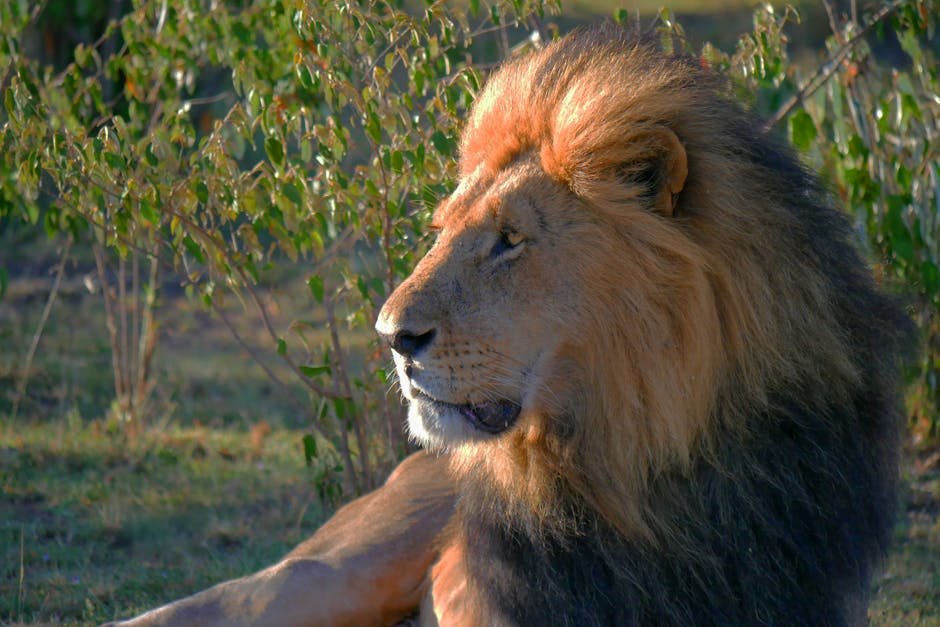The majestic world of big cats has always captivated the hearts of millions, with their grace, power, and beauty. Yet, for decades, these magnificent creatures have faced numerous threats, from habitat loss to poaching. Thankfully, dedicated conservation efforts have begun to turn the tide, allowing some of these big cats to thrive once more. Through the hard work of conservationists, wildlife organizations, and communities, these cats are making a comeback, proving that hope and action can bring about positive change. Dive into the stories of six big cats that are benefitting from these vital efforts.
Tigers: Roaring Back to Life
Tigers, often regarded as the epitome of power and majesty, have been on the brink of extinction due to rampant poaching and habitat destruction. However, concerted conservation efforts have helped their numbers rise, especially in countries like India, Nepal, and Russia. National parks, wildlife sanctuaries, and cross-border collaborations have played a crucial role in this resurgence. These programs focus on habitat restoration, anti-poaching patrols, and community engagement. Local communities are educated and involved in conservation, transforming them from hunters to protectors. Slowly but surely, these striped wonders are reclaiming their forests.
Lions: The Pride of Africa

Lions, the king of the jungle, have faced significant challenges due to human-wildlife conflict and loss of prey. Yet, conservation programs in countries like Kenya and Tanzania are helping these regal animals. Protected areas and wildlife corridors have been established to ensure their safe movement. Programs also focus on reducing human-lion conflicts by employing innovative solutions like livestock enclosures and compensation schemes. Engaging local communities has been key, turning potential adversaries into allies. These efforts are crucial for the survival of a species that symbolizes strength and courage.
Cheetahs: Racing Against Time
Cheetahs, known for their unmatched speed, have long been threatened by habitat fragmentation and illegal pet trade. Conservationists in Namibia and Botswana have spearheaded initiatives to protect these swift cats. The use of livestock guarding dogs has reduced cheetah-livestock conflicts, while relocation programs help stabilize populations. Captive breeding and rewilding efforts are also underway to bolster their numbers. These fast-paced felines, once disappearing, are now finding a foothold, illustrating how innovative conservation strategies can make a difference.
Leopards: Spotted Survivors
Leopards, adaptable and elusive, have faced threats from poaching and habitat encroachment. Yet, in countries like Sri Lanka and South Africa, conservation efforts are turning the tide. Protected areas and wildlife corridors are being expanded, ensuring these solitary hunters have room to roam. Anti-poaching measures, combined with community education programs, are critical in safeguarding these cats. The focus on reducing human-leopard conflict is also yielding positive results. These efforts ensure that these spotted survivors continue to thrive amidst challenges.
Snow Leopards: Ghosts of the Mountains
Snow leopards, often dubbed the “ghosts of the mountains,” are elusive creatures that dwell in the high altitudes of Central Asia. Conservation efforts across the Himalayas and Central Asian mountains are helping this enigmatic species. Community-based conservation programs focus on reducing human-snow leopard conflicts and promoting sustainable livelihoods. Camera traps and GPS collars are used to monitor their populations, providing valuable data for conservationists. By engaging local communities, these programs ensure that snow leopards have a future in the wild.
Jaguars: The Guardians of the Rainforest
Jaguars, the largest cats in the Americas, have faced threats from deforestation and illegal hunting. However, conservation initiatives in countries like Brazil and Mexico are making a difference. Protected areas and wildlife corridors ensure these powerful predators have the space they need. Anti-poaching patrols and community education programs are vital in reducing human-jaguar conflicts. By involving local people in conservation, these programs create guardians for the rainforest. The jaguar’s roar, once silenced, is echoing once again through its forest home.
In conclusion, the tales of these six big cats remind us of the power of dedicated conservation efforts and the importance of preserving these majestic creatures. Through collaboration, innovation, and community engagement, these big cats are not just surviving but thriving, offering hope for a future where they continue to roam free.

Linnea is a born and bred Swede but spends as much time as possible in Cape Town, South Africa. This is mainly due to Cape Town’s extraordinary scenery, wildlife, and atmosphere (in other words, because Cape Town is heaven on earth.) That being said, Sweden’s majestic forests forever hold a special place in her heart. Linnea spends as much time as she can close to the ocean collecting sea shells or in the park admiring puppies.






